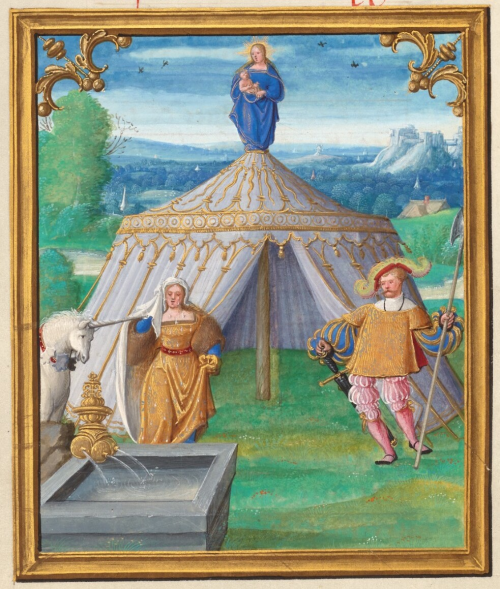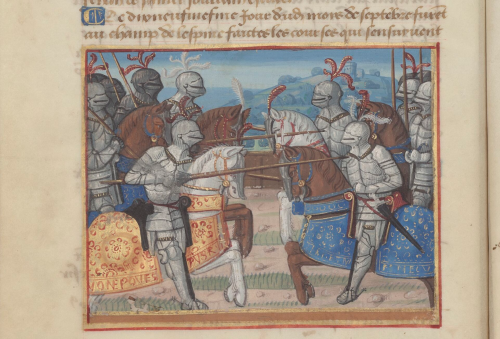
Welcome to our website! Are you interested in the Middle Ages, tournaments and chivalric culture? Then you have come to the right place! Here we offer you a gateway into the world of the pas d’armes (English: passage of arms). This was a highly ritualised form of tournament that was very popular in the fifteenth and early sixteenth centuries in Anjou, the Burgundian lands, France, Iberia, and Savoy, even reaching as far as Scotland. Here you can find the latest news on research into this particular type of tournament and elite entertainment, as well as a virtual exhibition, a research database and the latest publications regarding this fascinating type of chivalric event.
A pas d’armes involved a knight issuing a challenge to all comers provided they were of suitably noble birth who wished to fight him using lances, swords or pollaxes. These combats would take place within a theatrical framework incorporating literary and historical motifs derived from chivalric and courtly literature such as Arthurian romances. In turn, historical pas d’armes would inspire literary narratives of the later medieval period which often included such an event in their recounting of a hero’s ascent from promising young squire to experienced knight performing marvellous feats of arms both in the tilting yard and on the field of battle. Read more here on the pas d'armes.

The pas d’armes has long been known to medieval scholars, but it is only relatively recently that it has come to be examined as part of the development of tournaments and jousting that helped to create and foster chivalric and courtly culture throughout the later Middle Ages. This website presents the work of an international, interdisciplinary Arts and Humanities Research Council (AHRC) Research Network entitled ‘The Joust as Performance: Pas d’armes and Late Medieval Chivalry’. More on this project on this page. The principal investigators of the project are Rosalind Brown-Grant (University of Leeds) and Mario Damen (University of Amsterdam).
You are free to use the data on this website for non-commercial purposes under the CC BY-NC 4.0 licence mentioning: Rosalind Brown-Grant, Mario Damen, Jacob Deacon, and others, Pas d’armes and Late Medieval Chivalry (2023) [http://www.pasdarmes.org/].